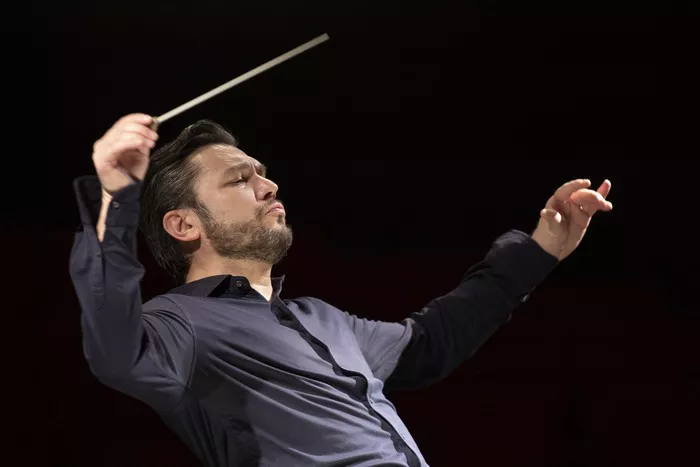Classical music has long been synonymous with romance, evoking feelings of passion, longing, and tenderness through its timeless melodies and harmonies. Within the vast repertoire of classical compositions, certain pieces stand out as epitomes of romantic expression, captivating listeners with their emotive power and poetic beauty. In this article, we delve into the world of the most romantic classical music, exploring the works that have defined and elevated the genre to its highest echelons.
The Romantic Era: A Flourishing of Emotion and Expression
Before delving into specific compositions, it’s crucial to understand the historical and cultural context that gave rise to romantic classical music. The Romantic era, spanning roughly from the late 18th to the late 19th century, was characterized by a profound shift in artistic sensibilities. Rejecting the restraint and formality of the preceding Classical era, composers of the Romantic period sought to express intense emotions, individuality, and the sublime in their music.
Central to the Romantic ethos was the idea of music as a vehicle for personal expression and storytelling. Composers drew inspiration from nature, literature, mythology, and personal experiences, infusing their compositions with deep emotional resonance. This period saw the emergence of virtuosic performers, expanded orchestras, and a heightened focus on expressive techniques such as rubato (tempo flexibility), dynamic contrasts, and expansive forms.
Defining Romanticism in Music: Elements and Characteristics
When discussing the most romantic classical music, several elements and characteristics come to the forefront. These include:
Expressive Melodies: Romantic composers crafted lush, lyrical melodies that often soared to great heights or delved into profound depths of emotion. These melodies served as the primary means of conveying the emotional core of a composition.
Harmonic Richness: The Romantic era witnessed a departure from the structured harmonic progressions of the Classical period. Composers experimented with chromaticism, extended chords, and unconventional tonal relationships, creating rich, colorful harmonic landscapes.
Programmatic Content: Many Romantic works were imbued with programmatic content, meaning they were inspired by specific stories, scenes, or ideas. This narrative element added layers of meaning and depth to the music, allowing listeners to engage with a piece on both emotional and intellectual levels.
Orchestral Grandeur: Orchestras expanded during the Romantic era, allowing composers to explore a wider range of timbres and textures. From lush string sections to majestic brass fanfares, the orchestral palette became an essential tool for evoking varied emotional landscapes.
Expressive Performance Practices: Romantic composers often indicated specific performance instructions in their scores, encouraging musicians to imbue their interpretations with passion, sensitivity, and nuance. Techniques such as rubato, agogic accents, and dramatic shifts in dynamics were common.
Iconic Works of Romantic Romanticism: A Journey Through Time
1. Ludwig van Beethoven – Symphony No. 9 in D minor, Op. 125 (“Choral”)
Beethoven’s Symphony No. 9 stands as a monumental work not only in the realm of classical music but also in the broader cultural landscape. The final movement, featuring the famous “Ode to Joy” theme, is a celebration of universal brotherhood and human resilience. The symphony’s grandeur, emotional depth, and revolutionary spirit encapsulate the essence of Romanticism.
2. Pyotr Ilyich Tchaikovsky – Symphony No. 6 in B minor, Op. 74 (“Pathétique”)
Tchaikovsky’s “Pathétique” Symphony is a poignant exploration of melancholy and passion. The deeply expressive melodies, particularly in the second movement, convey a sense of longing and introspection. The symphony’s tragic undertones and emotional intensity make it a quintessential Romantic masterpiece.
3. Frédéric Chopin – Nocturne in E-flat major, Op. 9, No. 2
Chopin’s Nocturne in E-flat major is a miniature gem of Romantic piano music. Its gentle, flowing melody and expressive harmonies evoke a mood of tender introspection and romantic yearning. The piece showcases Chopin’s gift for crafting intimate, emotive compositions that resonate with listeners on a deeply personal level.
4. Johannes Brahms – Violin Concerto in D major, Op. 77
Brahms’s Violin Concerto is a work of profound emotional depth and technical virtuosity. The sweeping melodies, intricate orchestration, and impassioned solo passages combine to create a rich tapestry of sound and feeling. The concerto’s blend of lyricism and drama exemplifies the Romantic ethos of emotional expression through instrumental music.
5. Franz Schubert – “Ave Maria” (Ellens Gesang III, D. 839)
Schubert’s “Ave Maria” is a sublime example of vocal Romanticism. The ethereal beauty of the melody, combined with the sacred text, elevates the piece to a transcendent realm of spiritual and emotional resonance. The simplicity and purity of Schubert’s setting have made it a timeless favorite in the classical repertoire.
Beyond the Classics: Modern Expressions of Romanticism
While the aforementioned works represent foundational pillars of Romantic classical music, the spirit of Romanticism continues to inspire composers and performers in the modern era. Contemporary composers often draw on Romantic ideals of emotional expression, narrative storytelling, and virtuosic craftsmanship, creating new works that resonate with audiences today.
For example, composers like Max Richter blend classical and electronic elements to create evocative soundscapes that explore themes of love, loss, and longing. His composition “On the Nature of Daylight” has been featured in films and has garnered widespread acclaim for its emotional depth and cinematic quality.
Similarly, composers such as Ludovico Einaudi and Yiruma have gained popularity for their piano compositions that evoke a sense of intimacy and introspection, carrying on the tradition of Romantic piano music in a contemporary context.
Conclusion
In conclusion, the most romantic classical music transcends mere notes on a page, reaching into the depths of human emotion and experience. From the grandeur of symphonies to the intimacy of solo piano works, Romantic composers and their works continue to captivate and inspire audiences around the world.

